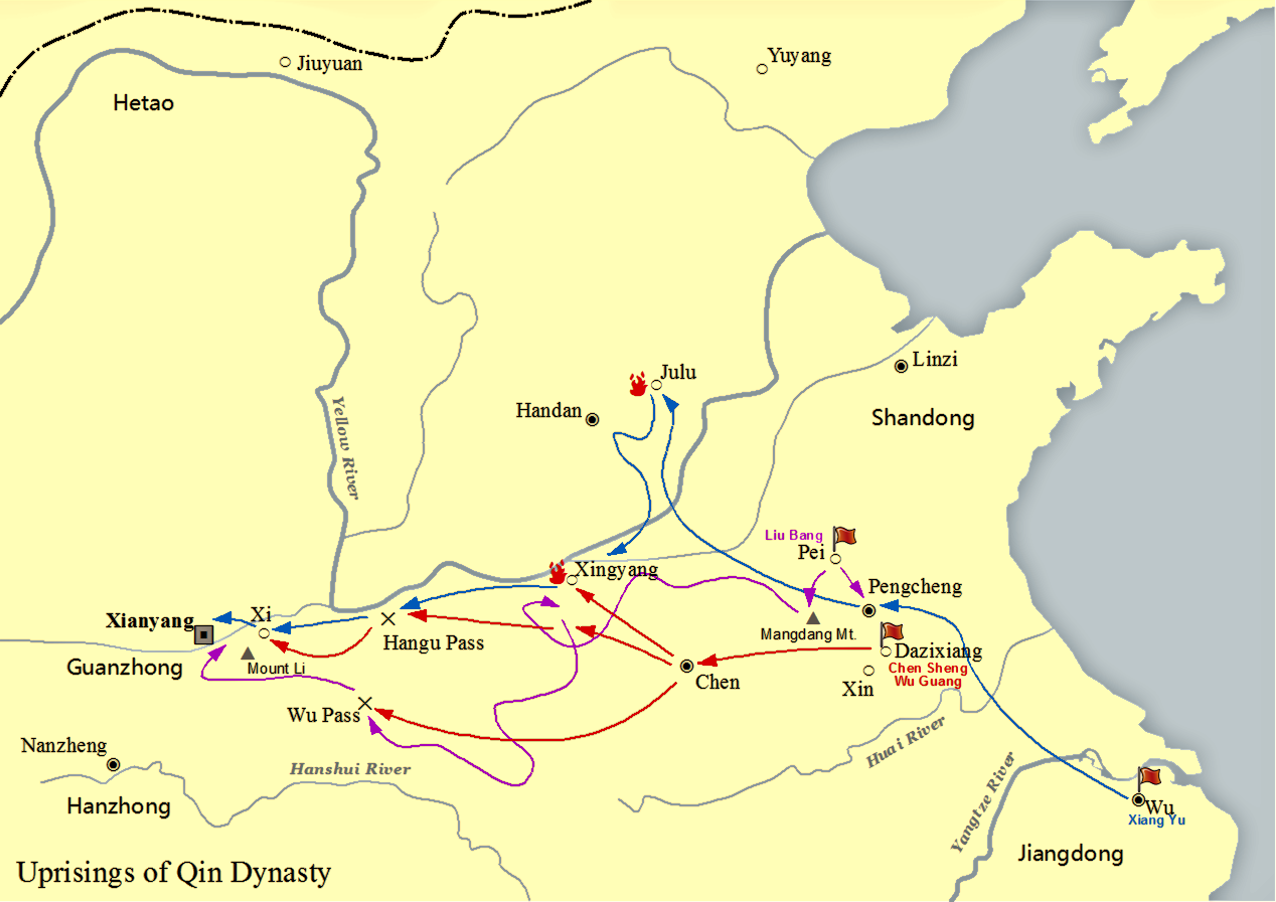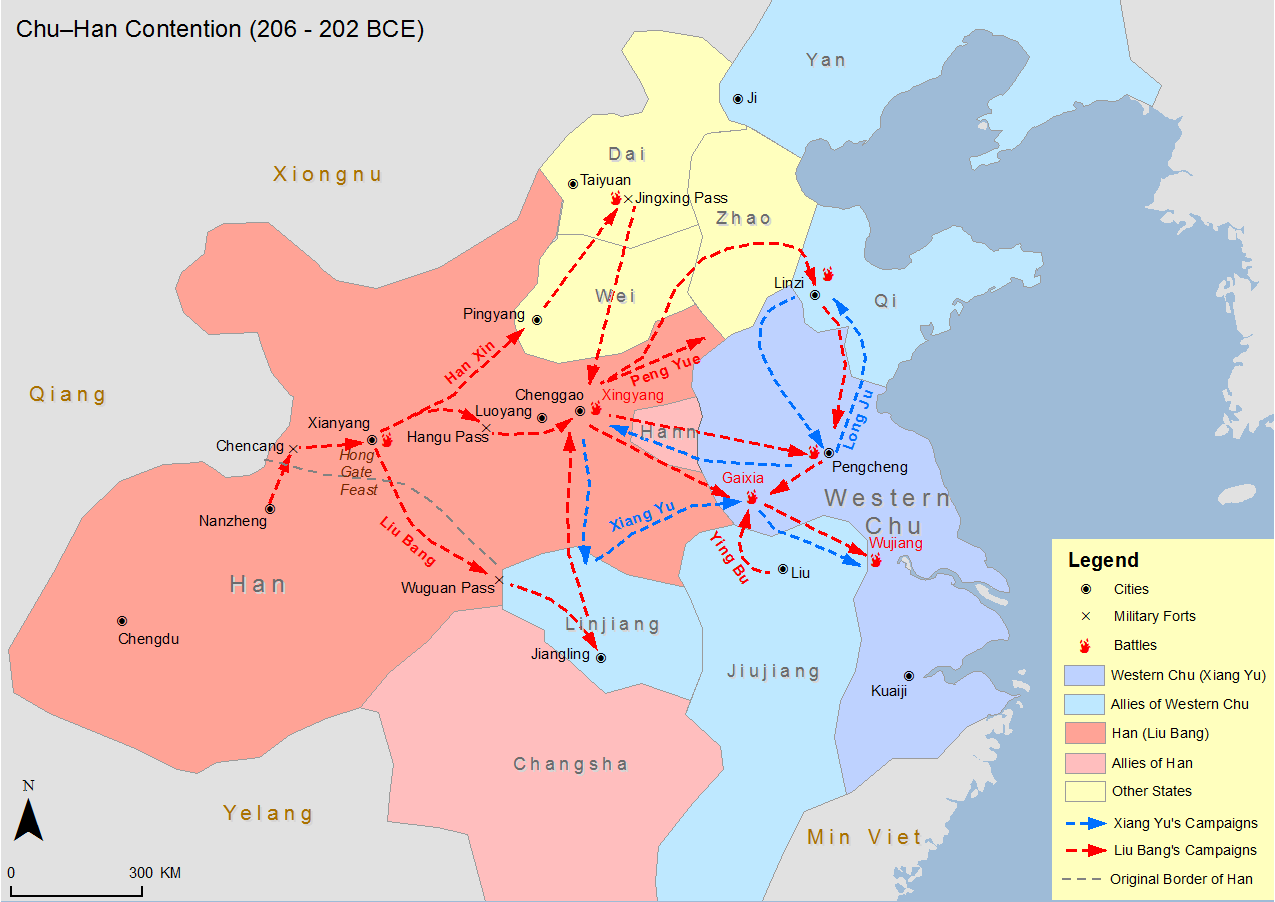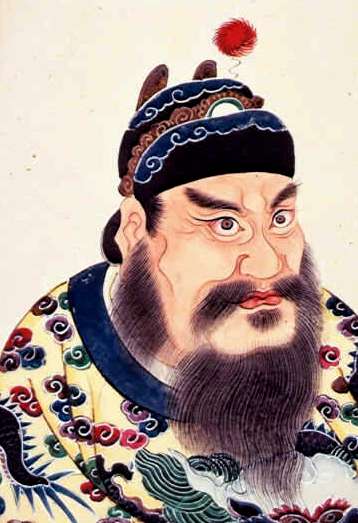|
Baota District
Baota District ( zh, s=宝塔区, t=寶塔區, p=Bǎotǎ Qū) is a district in Yan'an, Shaanxi, China. The district has an area of , and a permanent population of 497,085 as of 2019. Baota District serves as Yan'an's administrative center, hosting the city's government offices. The district is Yan'an's urban core, as it is highly urbanized, with over 80% of its population living in urban areas. The majority of Baota District's economy is derived from its tertiary sector, though the district is home to other economic activities such as agriculture, animal husbandry, and petroleum extraction. Etymology The district's name () literally translates to pagoda. History Government sources believe that the Guifang established an independent state in the area circa the 16th century BCE. A few dozen ancient jade artifacts uncovered within the district indicate that the territory once belonged to the Shang dynasty. During the Zhou dynasty, the area was inhabited by the Xianyun and Xirong ... [...More Info...] [...Related Items...] OR: [Wikipedia] [Google] [Baidu] |
District (PRC)
The term ''district'', in the context of China, is used to refer to several unrelated political divisions in both ancient and modern China. In the modern context, district ( zh, s=区, labels=no), formally city-governed district, city-controlled district, or municipal district ( zh, s=市辖区, links=no, labels=no), are subdivisions of a municipality or a prefecture-level city. The rank of a district derives from the rank of its city. Districts of a municipality are prefecture-level; districts of a sub-provincial city are sub-prefecture-level; and districts of a prefecture-level city are county-level. The term was also formerly used to refer to obsolete county-controlled districts (also known as district public office). However, if the word ''district'' is encountered in the context of ancient Chinese history, then it is a translation for ''xian'', another type of administrative division in China. Before the 1980s, cities in China were administrative divisions contai ... [...More Info...] [...Related Items...] OR: [Wikipedia] [Google] [Baidu] |
Shang Dynasty
The Shang dynasty (), also known as the Yin dynasty (), was a Chinese royal dynasty that ruled in the Yellow River valley during the second millennium BC, traditionally succeeding the Xia dynasty and followed by the Western Zhou dynasty. The classic account of the Shang comes from texts such as the '' Book of Documents'', '' Bamboo Annals'' and '' Shiji''. Modern scholarship dates the dynasty between the 16th and 11th centuries BC, with more agreement surrounding the end date than beginning date. The Shang dynasty is the earliest dynasty within traditional Chinese history that is firmly supported by archaeological evidence. The archaeological site of Yinxu, near modern-day Anyang, corresponds to the final Shang capital of Yin. Excavations at Yinxu have revealed eleven major royal tombs, the foundations of former palace buildings, and the remains of both animals and humans that were sacrificed in official state rituals. Tens of thousands of bronze, jade, ... [...More Info...] [...Related Items...] OR: [Wikipedia] [Google] [Baidu] |
Xiongnu
The Xiongnu (, ) were a tribal confederation of Nomad, nomadic peoples who, according to ancient Chinese historiography, Chinese sources, inhabited the eastern Eurasian Steppe from the 3rd century BC to the late 1st century AD. Modu Chanyu, the supreme leader after 209 BC, founded the Xiongnu Empire. After overthrowing their previous overlords, the Yuezhi, the Xiongnu became the dominant power on the steppes of East Asia, centred on the Mongolian Plateau. The Xiongnu were also active in areas now part of Siberia, Inner Mongolia, Gansu and Xinjiang. Their relations with the Chinese dynasties to the south-east were complex—alternating between various periods of peace, war, and subjugation. Ultimately, the Xiongnu were defeated by the Han dynasty in a Han–Xiongnu Wars, centuries-long conflict, which led to the confederation splitting in two, and forcible resettlement of large numbers of Xiongnu within Han borders. During the Sixteen Kingdoms era, listed as one of the "Fi ... [...More Info...] [...Related Items...] OR: [Wikipedia] [Google] [Baidu] |
Han Dynasty
The Han dynasty was an Dynasties of China, imperial dynasty of China (202 BC9 AD, 25–220 AD) established by Liu Bang and ruled by the House of Liu. The dynasty was preceded by the short-lived Qin dynasty (221–206 BC) and a warring interregnum known as the Chu–Han Contention (206–202 BC), and it was succeeded by the Three Kingdoms period (220–280 AD). The dynasty was briefly interrupted by the Xin dynasty (9–23 AD) established by the usurping regent Wang Mang, and is thus separated into two periods—the #Western Han (202 BC – 9 AD), Western Han (202 BC9 AD) and the #Eastern Han (25–220 AD), Eastern Han (25–220 AD). Spanning over four centuries, the Han dynasty is considered a Golden ages of China, golden age in Chinese history, and had a permanent impact on Chinese identity in later periods. The majority ethnic group of modern China refer to themselves as the "Han people" or "Han Chinese". The spoken Chinese ... [...More Info...] [...Related Items...] OR: [Wikipedia] [Google] [Baidu] |
Emperor Gaozu Of Han
Emperor Gaozu of Han (2561 June 195 BC), also known by his given name Liu Bang, was the founder and first emperor of the Han dynasty, reigning from 202 to 195 BC. He is considered by traditional Chinese historiography to be one of the greatest emperors in history, credited with establishing the first Pax Sinica, one of China's longest golden ages. Liu Bang was among the few dynastic founders to have been born in a peasant family. He initially entered the Qin dynasty bureaucracy as a minor law enforcement officer in his home town in Pei County, within the conquered state of Chu. During the political chaos following the death of Qin Shi Huang, who had been the first emperor in Chinese history, Liu Bang renounced his civil service position and became a rebel leader, taking up arms against the Qin dynasty. He outmanoeuvred rival rebel leader Xiang Yu to invade the Qin heartland and forced the surrender of the Qin ruler Ziying in 206 BC. After the fall of ... [...More Info...] [...Related Items...] OR: [Wikipedia] [Google] [Baidu] |
Xiang Yu
Xiang Yu (), born Xiang Ji, was a Chinese warlord who founded and led the short-lived ancient Chinese states, kingdom-state of Western Chu during the interregnum period between the Qin dynasty, Qin and Han dynasty, Han dynasties of China, dynasties known as the Chu–Han Contention (206–202 BC). A nobleman of the former state of Chu, Xiang Yu rebelled against the Qin dynasty under the command of his uncle Xiang Liang, and was granted the title of "Duke of Lu" () by Emperor Yi of Chu, King Huai II of the restoring Chu state in 208 BC. The following year, he led an outnumbered Chu army to victory at the Battle of Julu against the Qin armies led by Zhang Han (Qin dynasty), Zhang Han. After the fall of Qin, Xiang Yu divided the country into a federacy of Eighteen Kingdoms, among which he was self-titled as the "Hegemon-King of Western Chu" () and ruled a vast region spanning central and eastern China, with Pengcheng as his capital. Although a formidable warrior and milita ... [...More Info...] [...Related Items...] OR: [Wikipedia] [Google] [Baidu] |
Shang Commandery
Shang Commandery ( zh, c=上郡, l=Upper Commandery) was a historical commandery of China. It was located in modern-day Northern Shaanxi. The commandery was established during the reign of Marquess Wen of Wei. In 328 BC, it was annexed by the Qin state. The seat was Fushi (膚施), to the south of modern Yulin, Shaanxi. During the Chu–Han Contention, Shang was granted to Dong Yi, a Qin general who received the title "King of Di" from Xiang Yu. After Dong's defeat in 205 BC, the territory became part of Han. In late Western Han dynasty, Shang included 23 counties, namely Fushi (膚施), Dule (獨樂), Yangzhou (陽周), Muhe (木禾), Pingdu (平都), Qianshui (淺水), Jingshi (京室), Luodu (洛都), Baitu (白土), Xiangluo (襄洛), Yuandu (原都), Qiyuan (漆垣), Sheyan (奢延), Diaoyin (雕陰), Tuixie (推邪), Zhenlin (楨林), Gaowang (高望), Diaoyindao (雕陰道), Qiuci (龜茲), Dingyang (定陽), Gaonu (), Wangsong (望松) and Yidu (宜都). The populati ... [...More Info...] [...Related Items...] OR: [Wikipedia] [Google] [Baidu] |
Gaonu County
Gaonu County () was an ancient Chinese county under the jurisdiction of Shang Commandery in present-day northern Shaanxi. The county was established in the Qin dynasty, during the reign of Qin Shi Huang. Iterations of Gaonu County continued until the latter Eastern Han period, albeit interrupted by rebellions and invasions. The location of Gaonu County corresponds to present-day Baota District and Ansai District within Yan'an. During the Qin dynasty and the Han dynasty, Gaonu County served as an important regional center within present-day Yan'an. History In 328 BCE, the Qin state took land corresponding to present-day Baota District from the Wei state. Subsequently, during the rule of Emperor Qin Shihuang, the area was organized as Gaonu County beginning in 221 BCE, and was placed under the jurisdiction of the Shang Commandery. In 206 BCE, following the collapse of the Qin, Gaonu County was taken by forces belonging to Xiang Yu during the Chu–Han Contention. However, just six ... [...More Info...] [...Related Items...] OR: [Wikipedia] [Google] [Baidu] |
Qin Shi Huang
Qin Shi Huang (, ; February 25912 July 210 BC), born Ying Zheng () or Zhao Zheng (), was the founder of the Qin dynasty and the first emperor of China. He is widely regarded as the first ever supreme leader of a unitary state, unitary dynasties of China, dynasty in Chinese history. Rather than maintain the title of "Chinese king, king" ( ) or "suzerain#China, overlord" () borne by the previous rulers of Xia dynasty, Xia, Shang dynasty, Shang and Zhou dynasty, Zhou dynasties, he invented the title of "emperor" ( ), which would see continuous use by Chinese sovereigns and monarchy in China, monarchs for the next two millennia. Ying Zheng was born during the late Warring States period in Handan, the capital of Zhao (state), Zhao, to King Zhuangxiang of Qin, Prince Yiren and Queen Dowager Zhao, Lady Zhao. Prince Yiren was serving as an expendable hostage diplomacy, diplomatic hostage in Zhao at the time, but the wealthy merchant Lü Buwei saw potential in him and lobbied fo ... [...More Info...] [...Related Items...] OR: [Wikipedia] [Google] [Baidu] |
Qin (state)
Qin (, , or ''Ch'in'') was an ancient Chinese state during the Zhou dynasty. It is traditionally dated to 897 BC. The state of Qin originated from a reconquest of western lands that had previously been lost to the Xirong. Its location at the western edge of Chinese civilisation allowed for expansion and development that was not available to its rivals in the North China Plain. After extensive reform during the 4th century BC, Qin emerged as one of the dominant powers among the Seven Warring States. It Qin's wars of unification, unified the seven states of China under Qin Shi Huang in 221 BC. This unification established the Qin dynasty, which, despite its short duration, had a significant influence on later Chinese history. Accordingly, the state of Qin before the Qin dynasty was established is also referred to as the "predynastic Qin" or "proto-Qin". History Founding According to the 2nd-century BC ''Records of the Grand Historian'' by Sima Qian, the state of Qi ... [...More Info...] [...Related Items...] OR: [Wikipedia] [Google] [Baidu] |
Wei (state)
Wei (; ) was one of the seven major states during the Warring States period of ancient China. It was created from the three-way Partition of Jin, together with Han and Zhao. Its territory lay between the states of Qin and Qi and included parts of modern-day Henan, Hebei, Shanxi, and Shandong. After its capital was moved from Anyi to Daliang (present-day Kaifeng) during the reign of King Hui, Wei was also called Liang (). Not to be confused with the Wey state 衞, which is still sometimes only differentiated by its Chinese character in scholarship. History Foundation Surviving sources trace the ruling house of Wei to the Zhou royalty: Gao, Duke of Bi (), was a son of King Wen of Zhou. His descendants took their surname, Bi, from his fief. Bi Wan () served the Jin, where he became a courtier of Duke Xian's. After a successful military expedition, Bi Wan was granted Wei, from which his own descendants then founded the house of Wei. Spring and Autumn period Jin's ... [...More Info...] [...Related Items...] OR: [Wikipedia] [Google] [Baidu] |
Jin (Chinese State)
Jin (, Old Chinese: ''*''), originally known as Tang (唐), was a major Ancient Chinese states, state during the middle part of the Zhou dynasty, based near the centre of what was then China, on the lands attributed to the legendary Xia dynasty: the southern part of modern Shanxi. Although it grew in power during the Spring and Autumn period, its aristocratic structure saw it break apart when the duke lost power to his nobles. In 403BC, the Zhou court recognized Jin's three successor states: Han (Warring States), Han, Zhao (state), Zhao, and Wei (state), Wei. The Partition of Jin marks the end of the Spring and Autumn period and the beginning of the Warring States period. Geography Jin was located in the lower Fen River drainage basin on the Shanxi plateau. To the north were the Xirong and Beidi peoples. To the west were the Lüliang Mountains and then the Loess Plateau of northern Shaanxi. To the southwest the Fen River turns west to join the south-flowing part of the Yello ... [...More Info...] [...Related Items...] OR: [Wikipedia] [Google] [Baidu] |







